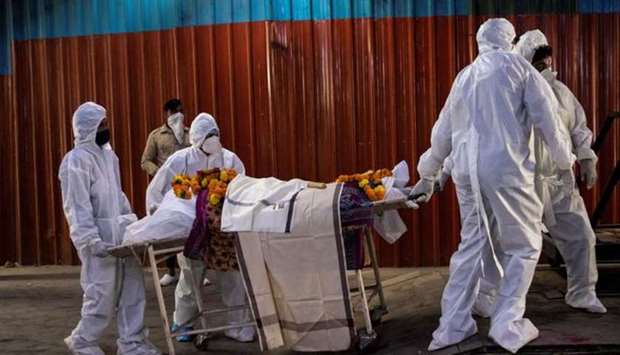India’s excess deaths during the Covid-19 pandemic could be as high as 4.9mn, a new study shows, providing further evidence that millions more may have died from coronavirus than the official tally.
The report by the Washington-based Center for Global Development, co-authored by India’s former chief economic adviser Arvind Subramanian, included deaths from all causes since the start of the pandemic through June this year.
India’s official tally of more than 414,000 deaths is the world’s third highest after the US and Brazil, but the study adds to growing calls from experts for a rigorous nationwide audit of fatalities.
A devastating rise in infections in April and May, driven largely by the more infectious and dangerous Delta variant, overwhelmed the healthcare system and killed at least 170,000 people in May alone, official data show.
“What is tragically clear is that too many people, in the millions rather than hundreds of thousands, may have died,” the report said, estimating between 3.4mn and 4.9mn excess deaths during the pandemic.
But it did not ascribe all excess deaths to the pandemic.
“We focus on all-cause mortality, and estimate excess mortality relative to a pre-pandemic baseline, adjusting for seasonality,” the authors said.
The health ministry did not immediately respond to a Reuters e-mail seeking comment.
Some experts have said excess deaths are the best way to measure the real toll from Covid-19.
“For every country, it’s important to capture excess mortality — the only way to prepare the health system for future shocks and to prevent further deaths,” Soumya Swaminathan, the chief scientist of the World Health Organisation, said on Twitter.
The New York Times said the most conservative estimate of deaths in India was 600,000 and the worst-case scenario several times that.
The government has dismissed those figures.
Health experts blame the undercounting largely on scarce resources in the vast hinterland home to two-thirds of India’s population of nearly 1.4bn, and also many deaths at home without being tested.
India has reported a decline in daily infections from a May peak, with 30,093 new cases yesterday making up its lowest daily count in four months.
Prime Minister Narendra Modi’s government has also been criticised for a messy vaccination campaign that many say helped worsen the second wave of infections.
Just over 8% of eligible adult Indians have received both vaccine doses.
In July, the government administered fewer than 4mn daily doses on average, down from a record 9.2mn on June 21, when Modi flagged off a free campaign to inoculate all 950mn adults.
Meanwhile, according to data released yesterday, two-thirds of India’s population have antibodies against the coronavirus, from a survey of 29,000 people across the nation conducted in June and July.
The fourth national blood serum survey which tests for antibodies, known as a sero survey, included 8,691 children aged 6-17 years for the first time.
Half of them were seropositive.
The survey showed 67.6% of adults were seropositive, while more than 62% of adults were unvaccinated.
As of July, just over 8% of eligible adult Indians had received two vaccine doses.
About 400mn of India’s 1.4bn people did not have antibodies, the survey showed.
India’s daily cases have fallen to four-month lows after a second-wave that crippled the healthcare system.
But experts have warned the authorities against swiftly reopening cities and voiced concerns about overcrowding at tourist sites.
“The second wave is still persisting. The danger of new outbreaks is very much there,” Vinod Kumar Paul, a top government adviser, told a news conference.
“One out of three, wherever you are,...is still vulnerable and therefore the pandemic is no way over,” he said.
The study also surveyed 7,252 healthcare workers and found 85% had antibodies, with one in 10 unvaccinated.
Last month, data showed at least half of under-18s in India’s financial capital of Mumbai were exposed to Covid-19 and had antibodies against it.
Some experts have said a third wave could hit children. Mumbai has joined other cities in building huge paediatric wards in preparation.

(File photo) India’s official tally of more than 414,000 deaths is the world’s third highest after the US and Brazil.
